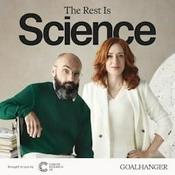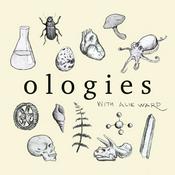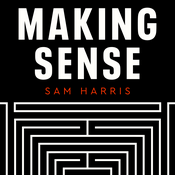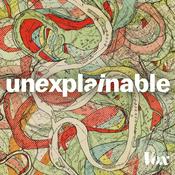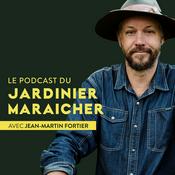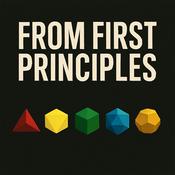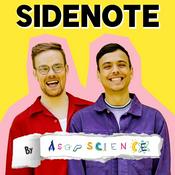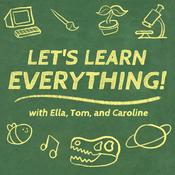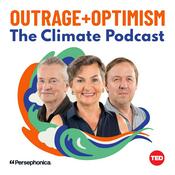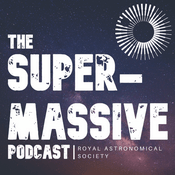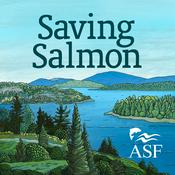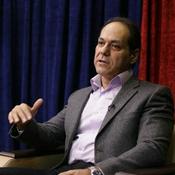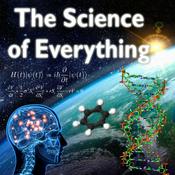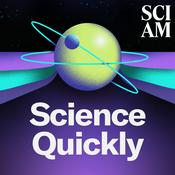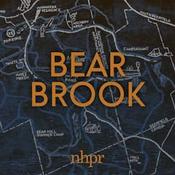370 episodes
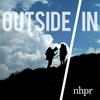
How Broadway’s SFX designers make it rain (and snow) on stage
2025-12-24 | 28 mins.
Over the past few decades, CGI has allowed directors to put virtually anything they can imagine onto the big screen. But in the world of theater, practical effects still rule supreme. So how do these special effects wizards make it snow, rain, and gust inside the confines of a theater, where real live audiences are sitting just feet away? And what are the challenges to dumping more than 100 gallons of water indoors, or coating the stage in slippery fake snow? We tour a Brooklyn warehouse that houses the secrets behind Broadway’s wildest special effects, where one engineer is inventing new ways to wow audiences with the magic of the elements.Featuring Jeremy Chernick.Produced by Taylor Quimby. For full credits and transcript, visit outsideinradio.org.SUPPORTOutside/In is made possible with listener support. Click here to become a sustaining member of Outside/In. Follow Outside/In on Instagram or join our private discussion group on Facebook.LINKSTo see some of the effects we mention in action, check out Jeremy Chernick’s website gallery of shows he’s worked on.ALSO! Did Operation Night Cat leave you wanting more? Make a year-end gift to NHPR, and we’ll invite you to a special Operation Night Cat Virtual Q&A on January 8th 6PM EST, featuring our very own Nate Hegyi! Hosted by Simplecast, an AdsWizz company. See pcm.adswizz.com for information about our collection and use of personal data for advertising.

The FernGully Effect
2025-12-17 | 31 mins.
When Avatar came out in 2009, it shattered box-office records. And even though it was billed as a sci-fi epic featuring blue aliens on a far-away moon, the movie didn’t shy away from a pretty Earth-based message of environmental conservation.So, with a third Avatar hitting theaters this weekend, we were inspired to bust out the popcorn, dim the lights, and play the part of pop culture critics. How do movies – from blockbusters to documentaries to Disney films – shape our conception of the natural world?SUPPORTTo share your questions and feedback with Outside/In, call the show’s hotline and leave us a voicemail. The number is 1-844-GO-OTTER. No question is too serious or too silly.Outside/In is made possible with listener support. Click here to become a sustaining member of Outside/In. Follow Outside/In on Instagram and BlueSky, or join our private discussion group on Facebook.LINKSSimilar to Avatar, the animation required to pull off Finding Nemo was a technological feat for its time. Here’s a documentary showing you behind the scenes.Listen to all of “Little April Showers” (that catchy tune from Bambi) here. You can find Alyssa Vitale’s movie reviews on her Youtube channel, Mainely Movies. Salma Monani’s academic work within ecocinema extends far beyond that of FernGully. Her faculty page at Gettysburg College can be found here.Find some of Erin Trahan’s recent work on her website, including a recent documentary following Michael Dukakis.You can find David Whitley’s book on Disney animation here. CREDITS Produced by Marina Henke. For full credits, transcript, and a list of movies mentioned in this episode visit outsideinradio.org Hosted by Simplecast, an AdsWizz company. See pcm.adswizz.com for information about our collection and use of personal data for advertising.

Time heals all wounds
2025-12-10 | 27 mins.
Did you know that some species of worms can be cut into multiple pieces and each piece will make a new worm? Some can even make a whole new brain. Wild, right?While not all forms of healing are quite as miraculous as this, the body’s ability to repair itself is pretty darned cool. So today, we’re answering your questions about healing. Like…Why do we pick at scabs?Why do animals lick their wounds?How does breath work affect the nervous system?What's the best outdoor activity to help heal from heartbreak?For our next Outside/Inbox roundup, we’re looking for questions all about love! From what happens in our bodies when we fall in and out of love, to whether animals fall in love. Send us your questions by recording yourself on a voice memo, and emailing that to us at [email protected]. Or you can call our hotline: 844-GO-OTTER.Featuring Mansi Srivastava, Mona Gohara, Susan Taylor, Henk Brand, Jane Sykes, Aditi Garg, Carolina Estêvão, and Sandra Langeslag.For full credits and transcript, visit outsideinradio.org. SUPPORTOutside/In is made possible with listener support. Click here to become a sustaining member of Outside/In. Follow Outside/In on Instagram or join our private discussion group on Facebook Hosted by Simplecast, an AdsWizz company. See pcm.adswizz.com for information about our collection and use of personal data for advertising.

Of Men and Mice
2025-12-03 | 39 mins.
At any given time, millions of lab mice are being used in research facilities nationwide. And yet nearly all of them can be connected back to a single source: The Jackson Laboratory in Bar Harbor, Maine, where the modern lab mouse was invented.What started as a research project aimed at understanding heredity is now a global business. Research on lab mice has led to more than two dozen Nobel prizes, helped save countless human lives, and has pushed science and medicine to new heights. But behind it all is a cost that’s rarely discussed outside of the ethics boards that determine how lab mice are used. In this episode, we hear the story of how a leading eugenicist turned the humble mouse from a household pest into science’s number one guinea pig. Plus, we get a rare peek inside the Jackson Laboratory - where over 10,000 strains of lab mice DNA are kept cryogenically frozen. Featuring Bethany Brookshire, Kristin Blanchette, Lon Cardon, Rachael Pelletier, Karen Rader, Nadia Rosenthal and Mark Wanner. Produced by Jeongyoon Han. For a transcript and full list of credits, go to outsideinradio.org. Note: This episode originally aired in April, 2023. SUPPORTOutside/In is made possible with listener support. Click here to become a sustaining member of Outside/In. Follow Outside/In on Instagram or join our private discussion group on Facebook.Submit a question to the “Outside/Inbox.” We answer queries about the natural world, climate change, sustainability, and human evolution. You can send a voice memo to [email protected] or leave a message on our hotline, 1-844-GO-OTTER (844-466-8837).LINKSKaren Rader’s book, Making Mice: Standardizing Animals for American Biomedical Research, 1900-1955, is a definitive source on the birth of the lab mouse…Curious to learn more about pests? Take a look at Bethany Brookshire’s book, Pests: How Humans Create Villains.This piece from the New Yorker questions the assumptions and ethical choices scientists have made by using lab mice in sterilized lab environments.In this New York Times essay, Brandon Keim explores how some ethicists want to reduce harm to animals used for research through a new model: repaying them. Hosted by Simplecast, an AdsWizz company. See pcm.adswizz.com for information about our collection and use of personal data for advertising.

On the mend: 8 tips on how to repair your clothes
2025-11-26 | 28 mins.
The garment industry has a giant carbon footprint, labor issues, and a massive waste problem. We have the power to change how and where we shop, but there’s another way to shift our consumption: the practice of repairing our clothes. After all, the most sustainable garment is always the one already hanging in your closet. But mending is more than a household chore: it can also infuse new joy in our habits, skills, perspective, and community.Outside/In producer Justine Paradis talked to a few repair pros and came up with 8 tips on embracing a repair mindset, lengthening the life of our clothes, and getting the practice of mending into the rhythm of our lives. Featuring Emilia Petrarca, Dante Zagros Gonzalez, Steve Foss, Arounna Khounnoraj, Sonali Diddi, Vrylena Olney, Ely Spencer, and Ali Mann.This episode was produced by Justine Paradis. For full credits and transcript, visit outsideinradio.org. LINKSA few extraordinary examples of mending: Celia Pym’s Norwegian Sweater, a Japanese fisherman’s jacket constructed with sashiko, wool coats repaired with lavish embroidery, and a plain white t-shirt mended by Maya Skylark.Look for mending classes at your local library, thrift stores, knitting shops, or other community gathering places. Remote classes are also offered at places like Tatter. You can also find a repair cafe near you, explore starting your own, or try throwing a repair party with friends.“Why Do Clothes Suck Now” – a great primer on Culture StudyA striking visual demonstrating the decline in sweater quality since the ‘90s. How to buy a sweater that doesn’t suck (Defector)“Repair Month” on Emilia Petrarca’s newsletter Shop Rat, including laundry tips and her crowd-sourced Google spreadsheet of repair specialists in NYC and beyond. Hosted by Simplecast, an AdsWizz company. See pcm.adswizz.com for information about our collection and use of personal data for advertising.
More Science podcasts
Trending Science podcasts
About Outside/In
Listen to Outside/In, The Rest Is Science and many other podcasts from around the world with the radio.net app

Get the free radio.net app
- Stations and podcasts to bookmark
- Stream via Wi-Fi or Bluetooth
- Supports Carplay & Android Auto
- Many other app features
Get the free radio.net app
- Stations and podcasts to bookmark
- Stream via Wi-Fi or Bluetooth
- Supports Carplay & Android Auto
- Many other app features


Outside/In
download the app,
start listening.
